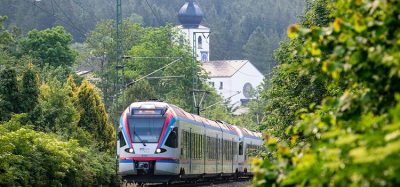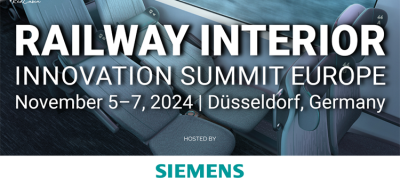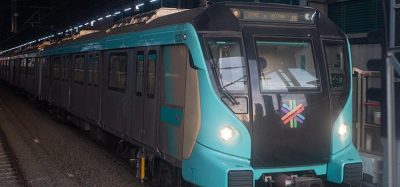Bombardier’s latest locomotives
Posted: 2 March 2005 | | No comments yet
In December 2004, SBB Cargo received the first of 18 TRAXX multi-system locomotives Re 484 (Figure 1). This marks a new era for the TRAXX locomotive platform, extending its range into Italy.
In December 2004, SBB Cargo received the first of 18 TRAXX multi-system locomotives Re 484 (Figure 1). This marks a new era for the TRAXX locomotive platform, extending its range into Italy.
In December 2004, SBB Cargo received the first of 18 TRAXX multi-system locomotives Re 484 (Figure 1). This marks a new era for the TRAXX locomotive platform, extending its range into Italy.
SBB Cargo uses the Re 484 for freight shuttle services between Switzerland and Italy, operating over all three border stations: Domodossola, Luino and Chiasso. It complements the Re 482 which operates north between the Swiss and German rail networks. With both locomotive types, Re 482 and Re 484, SBB Cargo is now an autonomous provider of freight services on the north-south routes between Germany and Italy.
The design, production and homologation of the Re 484 for operation in Italy and Switzerland were completed exactly on schedule. As a TRAXX MS platform locomotive, the Re 484 builds strongly on the TRAXX F140 AC. The TRAXX AC and MS locomotives are very similar. They have the same carbody, bogies, machine rooms and driver’s cab. The differences can be found in the additional equipment provided for operation on 1.5 and 3kVDC catenaries. The usage of the TRAXX platform, with its proven and well-known equipment, was a key to obtaining the network acceptance for the Re 484 in Switzerland and Italy within only six months. Furthermore, Bombardier’s experience with the Italian rail network, that is, with the locomotives E 412, E 405 and E 464, was invaluable for meeting the SBB Cargo targets.
The TRAXX locomotive platform
Liberalisation of track access and cross-border operations are seen as major steps towards improving rail freight in Europe. Today’s market forces operators to maintain an elevated level of flexibility, thus needing a supply of homologated locomotives for specific transport routes. High locomotive reliability and availability, as well as short delivery schedules are basic requirements.
Bombardier has developed the TRAXX platform to address these needs. The platform consists of the following members:
- TRAXX AC for networks 15kV, 16.7Hz + 25kV, 50Hz
- TRAXX MS for networks 15kV, 16.7Hz + 25kV, 50Hz and 1.5kV + 3kVDC
- TRAXX DC for 3kVDC networks
- TRAXX DE as diesel-electric locomotive for non-electrified lines
Building up international traffic is often a complex task considering the requirements of personnel, languages, service and support, return traffic, infrastructure, and so forth. The TRAXX platform gives the operator a choice of traction to set up the transportation chain in an optimum way. The operator can select among AC, MS, DC or DE locomotives, all of which are capable of operating cross-border. Whereas the TRAXX DC can be the most economic solution in Italy, for example on the long 3kVDC stretches north-south, the TRAXX MS is attractive between Italy, Austria, Switzerland and France. It is also predestined for the Benelux countries and for east-west traffic to Poland. In Central Europe, on 15 and 25kVAC lines, the TRAXX AC is wide spread.
For all possible transportation setups, the operator will benefit from the synergies of a common TRAXX fleet. These locomotives are designed in the same way and have all the same man-machine interfaces. There is a high degree of commonality of components yielding synergies in parts management and procurement, in service and maintenance, in disposition and personnel training. Because the TRAXX locomotives have the same equipment interfaces, future upgrading, for example with ETCS, is facilitated.
New TRAXX systems and locomotives
New Bombardier train protection systems for cross-border operation
Bombardier has developed new automatic train protection (ATP) solutions for cross-border locomotives based on the ETCS (European Train Control System) architecture. Railion BR 185 locomotives have been equipped with these new systems since January 2004. The Bombardier ATP system consists of a central processor which interfaces to the national ATP antennae via STMs (Specific Transmission Modules). The present version is for Germany, with STM-LZB and STM-PZB having the same functionalities as the conventional PZB90 and LZB80. The STM-LZB is being upgraded to include the CIR-ELKE capability. Further STMs will be added for other countries as needed.
The integration of the national ATP systems into the ETCS based architecture reduces the equipment size and also the overall costs compared to present day stand-alone systems. Equally important, the Bombardier system also handles the transition from one ATP system to another. This function is needed when operating cross-border from one national network to another and onto future ETCS lines. The new Bombardier system is also foreseen for the Betuwe Line from Germany to the harbours of Rotterdam, as well as for other countries introducing ETCS.
The Bombardier ATP system is a key to facilitating cross-border services for TRAXX locomotives. On the BR 185, the complete system covering PZB, LZB and future ETCS, is fit into a standard cubicle of dimensions 2000 x 600 x 600mm (Figure 2). A variant of this system can also accommodate a STM-ATB-EG for The Netherlands.
Three ATP cubicles can be fit into each TRAXX locomotive. These cubicles are configured for specific corridors. Apart from the German/Dutch cubicle, a second cubicle is available for the French systems KVB and RPS/ATESS. Such a unit is installed on the Railion BR 185 020 – 185 039 which operate cross-border between Mannheim and Metz. Another ATP cubicle is available for operation in Italy with the RS 4-codici, as is installed on the SBB Cargo Re 484. Further cubicles are provided as needed.
Until the ETCS system is widespread within Europe it is necessary to install the national ATP systems for cross-border services. Unfortunately, there is little experience yet with the interactions between the infrastructure equipment of the different railways. To eliminate problems with the Swiss ‘Signum’ antenna in Germany, Bombardier now provides an alternative electromagnet which can be switched off outside of Switzerland. The Bombardier solution has recently been homologated in Switzerland, Germany and Austria and is now available for cross-border traffic between these countries.
The CFL Class 4000 – a new cross-border locomotive
In August 2003, CFL awarded Bombardier a contract to supply 20 Class 4000 locomotives for passenger services in Luxembourg, as well as for cross-border operations to Germany, Belgium and France, (Figure 3). This locomotive contract was granted after CFL had already leased six TRAXX F140 AC locomotives from Angel Trains Cargo for passenger and freight services. The first Class 4000 locomotive was delivered in September 2004, only 13 months after signing the contract.
The very short delivery schedules of the TRAXX locomotives to CFL was only possible after extensive measurements had been performed to secure the compatibility of the locomotive with the 25kVAC network of CFL. These tests in Luxembourg started in 2001 and the last verifications were completed in 2003. At the end of the test programme, all CFL network requirements were fulfilled and the new Class 4000 locomotive was homologated and put into service very shortly thereafter.
The Class 4000 is a TRAXX P140 AC locomotive for 140km/h equipped with passenger information systems and remote control for push-pull operation. These locomotives will operate with Bombardier double-deck coaches, of which 85 units are presently in delivery. The Class 4000 has a high level of commonality to the Railion BR 185 presently in operation between Mannheim-Metz.
The Railion BR 185.2
The BR 185 locomotive is being elevated to state-of-the-art technology at mid-delivery in the series. Starting with the number 185 201 in January 2005, (Figure 4), the Railion locomotives, BR 185.2, have the following new systems:
- Water cooled IGBT traction converter
- Modular brake system (MBS)
- Carbody with improved crash safety
The new IGBT traction converter has lower power losses than the previous GTO converter. This increases the power efficiency of the locomotive on average by approximately 1%. Since power consumption is a major cost element of the railways, this improvement is important for lowering costs.
The modular brake system features higher levels of integration. By means of a local database interconnecting the modules, the MBS has an improved diagnosis capability which significantly reduces maintenance costs.
The carbody outer dimensions are largely unchanged, however, the design is structurally modified to meet the new upcoming TSI standards for crash capability. This provides a significantly higher level of passive safety to the locomotive personnel in the event of an accident. Also, the new carbody is typically much less costly to repair. The design of the carbody has been validated very successfully in a crash test at the CNTK test ring in Zmigrod, Poland.
The noted new features of the BR 185.2 are now implemented on all TRAXX locomotives. This means, for example, that the new carbody is identical for all AC, MS and DC locomotives. Passenger information systems and bogie can be selected as needed by the operators.
The SBB Cargo Re 484
As described above, the Re 484 extends the range of TRAXX locomotives to countries with 1.5 and 3kVDC catenaries. A TRAXX F140 MS, the Re 484 is a four-system locomotive designed for cross-border traffic in all Central and Eastern European countries. Equipped for all four catenary voltages, the version Re 484 is activated, however, only for Swiss-Italian operation on 15kVAC + 3kVDC lines.
Key design features of the TRAXX MS locomotives are:
- Low weight of approximately 86 tons or less. The Re 484 has a weight of only 85.6 tons.
- The high voltage equipment fits into two cabinets within the machine room. In this way, the equipment is protected against external contamination and can be readily inspected and maintained.
- The traction converter operates on all catenary systems with chopper-stabilised intermediate voltage which makes the propulsion system insensitive to the very large catenary voltage variations on 1.5 and 3kVDC networks. This gives the best possible locomotive power efficiency.
- Traction motors and drive systems are the same as on the proven TRAXX AC locomotives.
The TRAXX MS has the driver’s desk on the right side with a second seat on the left. This desk fulfills the UIC standards and is accepted in many countries where the driver sits typically right (Germany, Austria) or typically on the left (Switzerland, Italy, France and Luxembourg). The driver has the option of using control devices at the cab side windows and can thus perform all necessary functions for driving and maneuvering. Optionally, the locomotives can also be fit with video cameras for rear viewing, as is the case for SBB Cargo, BLS Cargo and CFL locomotives.
Displays are used in the driver’s desk to the largest possible extent. This has the advantage that the presentation of driver information can be matched to the needs of each country. The country specific settings are activated at the border crossing through manual country selection.
Outlook
Bombardier is committed to support rail operators with cross-border locomotives. During 2004, major new homologations of the TRAXX locomotives were obtained. The TRAXX locomotive platform is being continuously improved to resolve critical border issues and thus to pave the way for more efficient European-wide operations. New systems and components are being developed and implemented into the TRAXX platform step-by-step to meet the needs of European services.
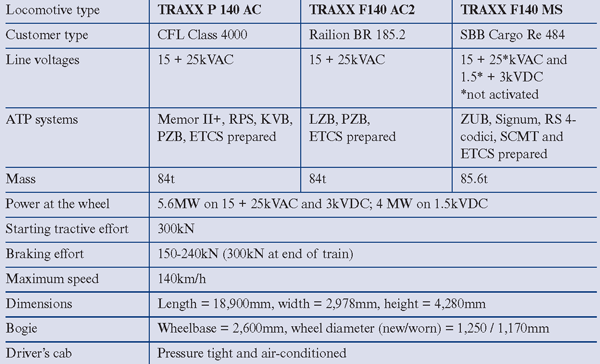

Table 1: Key data of the new TRAXX locomotives of CFL, Railion and SBB Cargo
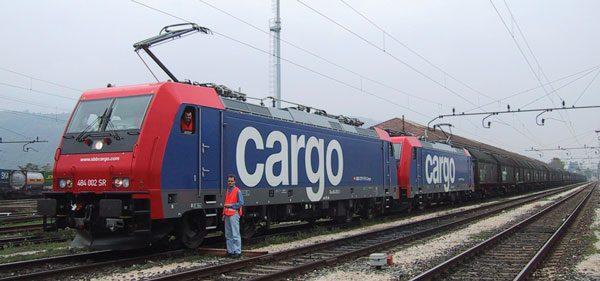

Figure 1: The SBB Cargo Re 484is the first multi-system locomotive of the TRAXX platform. It is designed as a four-system cross-border locomotive. The Re 484 currently operates between Switzerland and Italy
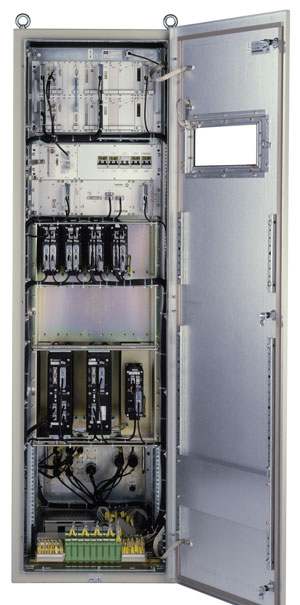

Figure 2: New ATP system of Bombardier is based on ETCS architecture. It fulfills the functionalities of the conventional PZB90 and LBZ90 and can be upgraded to ETCS. Since January 2004, the new Bombardier ATP system is installed on all TRAXX locomotives for operation in Germany
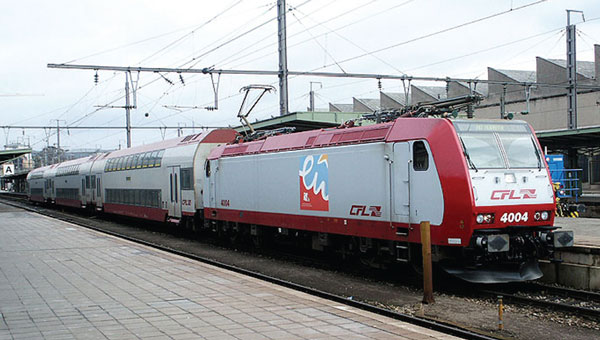

Figure 3: The Class 4000 of CFL is a 15 + 25kVAC locomotive for operation in Luxembourg, Germany, France and Belgium. It is equipped with a passenger information system similar to the DB Regio locomotives BR 146
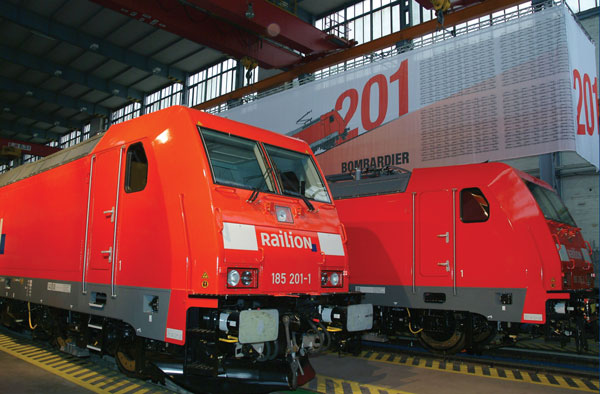

Figure 4: The BR 185.2 marks a step of innovation for the TRAXX locomotives. Compared to the previous BR 185, it features a carbody with much increased crash safety, new IGBT traction converters and a new modular brake system. These systems are now standard on all TRAXX locomotives
Issue
Related topics
Related organisations
Bombardier Transportation, CFL, Railion Deutschland AG, SBB Cargo AG



